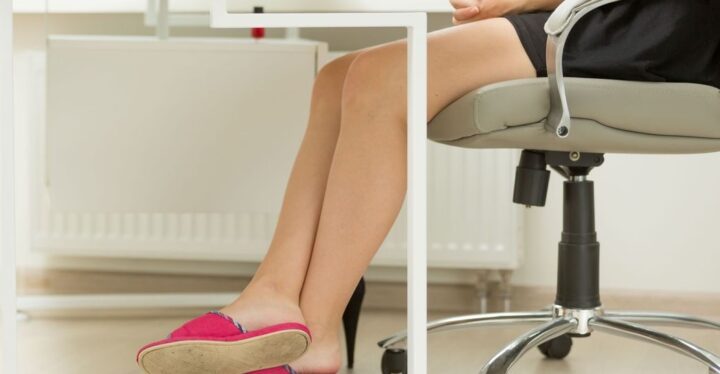
Lose weight while sitting: How a single muscle boosts fat burning
Losing weight while sitting sounds like a dream – but it’s not. A study has provided new results regarding the soleus muscle and confirmed that a certain exercise can actually increase fat burning even while sitting.
We’ll show you how the so-called soleus push-up works. Read on now!
Losing weight while sitting: study with new results
The goal of weight loss can be achieved through various measures such as a change in diet, lifestyle adjustments or a fitness program. It is often the combination of these three aspects that helps us get closer to our weight loss goal. In 2021, around 330,000 people took slimming products every day or almost every day to help them lose weight. In addition, around 4.12 million people showed a particular interest in diets and diet products. There are a variety of slimming diets – from the low-carb diet and keto diet to the protein diet and intermittent fasting.
There are many ways to achieve your individual dream weight. But you probably didn’t expect that it was possible to lose weight even while sitting. Until now, we have assumed that sitting for long periods of time makes it more difficult to lose weight. However, scientists at the University of Houston in Texas made surprising findings as part of their study. They discovered that a small muscle in the calf works differently than other muscles. This muscle can contribute to fat loss and fat burning and activate metabolism.
Our body is home to around 640 muscles, including many small muscles that cannot be specifically trained during sport. This also includes the so-called soleus muscle or sole muscle, which extends from the lower area of the knee to the heel. The special thing about this muscle: If it is trained appropriately, it can have a significant impact on metabolism.
Feet up: Lose weight with simple exercises for the soleus muscle
The American research team made amazing discoveries through a muscle biopsy. With this examination method, tissue samples from a muscle, in this case the soleus muscle, are taken and analyzed. Unlike other muscles, which normally use glycogen, the storage form of carbohydrates, the soleus muscle breaks down blood sugar and fats instead. This results in glycogen levels remaining constant and therefore muscle endurance is improved. Researcher Marc Hamilton emphasized that this represents a previously unexplored opportunity to optimize our health. By activating this muscle, the local oxidative metabolism can be kept at an increased level for hours.
“The soleus’s lower-than-average dependence on glycogen helps it work effortlessly for hours without tiring during this type of muscle activity,” Hamilton said in a University of Houston press release. “We never imagined that this muscle would have this kind of capacity. It has been in our bodies all this time, but until now no one has studied how to use it to optimize our health,” the researcher explained, adding : “When properly activated, the soleus muscle can drive local oxidative metabolism to high levels for hours, not just minutes”.
Soleus push-up: This is how the weight loss exercise works while sitting
Normally, the soleus muscle is activated when standing or walking. However, the scientists have discovered a way to train this muscle while sitting. This is how the so-called soleus push-up (SPU) is carried out:
Place your feet flat on the floor and relax your leg muscles.
Lift your heel while keeping the front of your foot on the ground.
Once the heel is raised as high as possible, passively release the foot and touch the heel to the floor again.
The goal is to shorten the calf muscle while simultaneously activating the soleus muscle.
Executing the exercise is similar to a jiggling movement, but should be done much slower and more consciously. “The soleus push-up may look simple from the outside, but sometimes what we see with the naked eye isn’t the whole story. It’s a very specific movement […] designed to maximize health benefits “said Hamilton in the release.
In his study presentation, the scientist does not give a direct answer to how long or how often the soleus push-up should be performed. However, he tested longer periods of up to four and a half hours. When done correctly, the exercise is intended to target only the soleus muscle, which weighs about one kilogram. This should ensure that the leg is neither tired nor overloaded.
Categories: General
